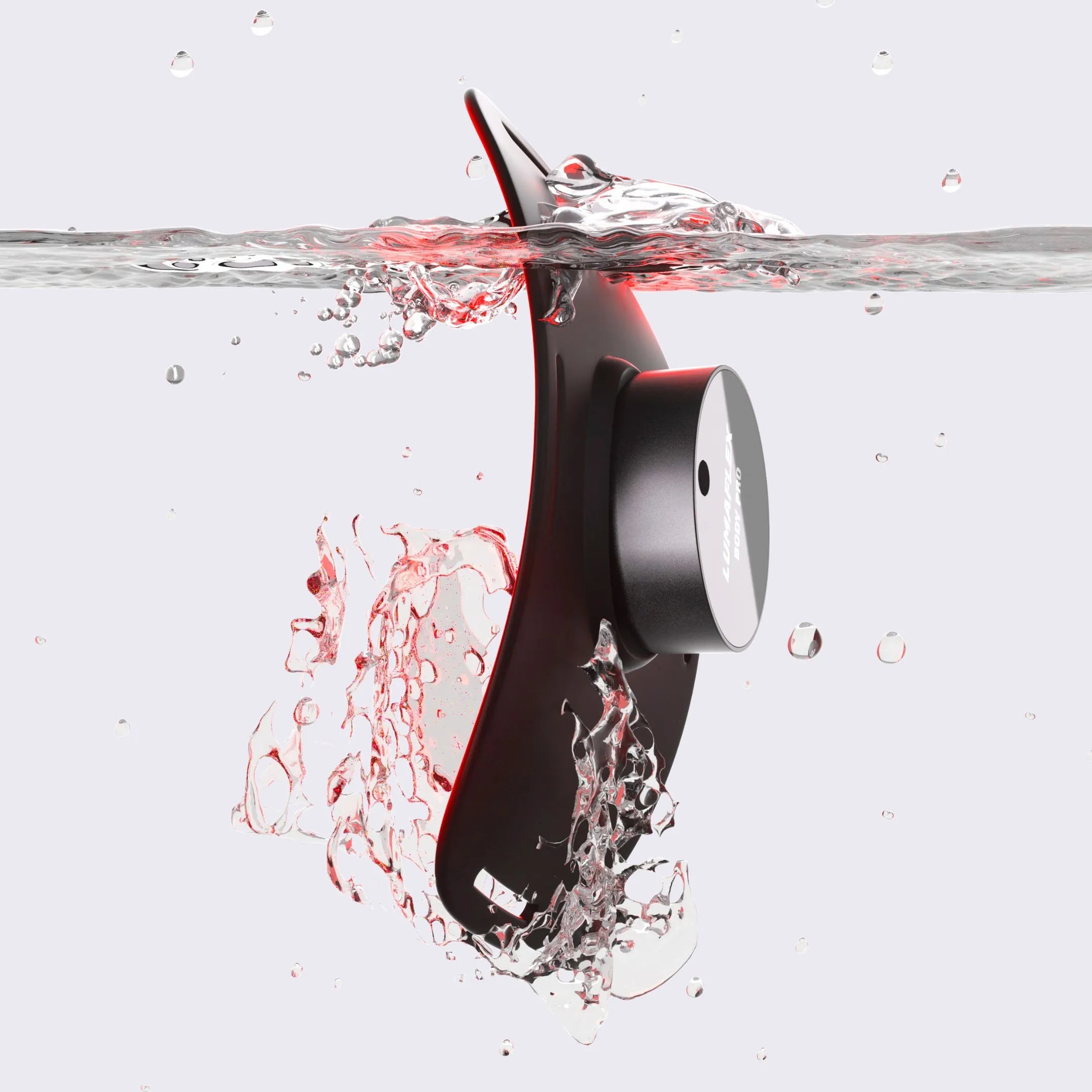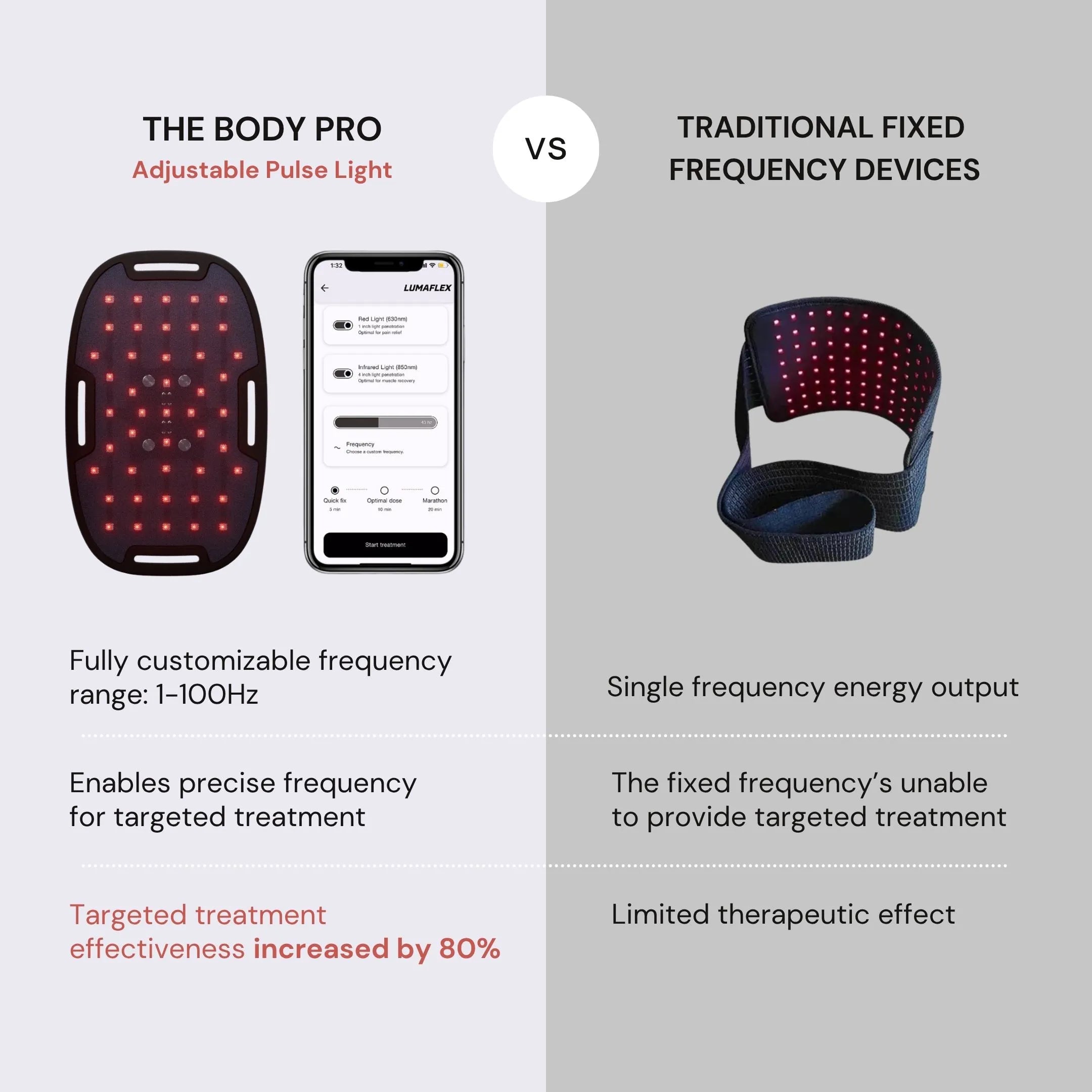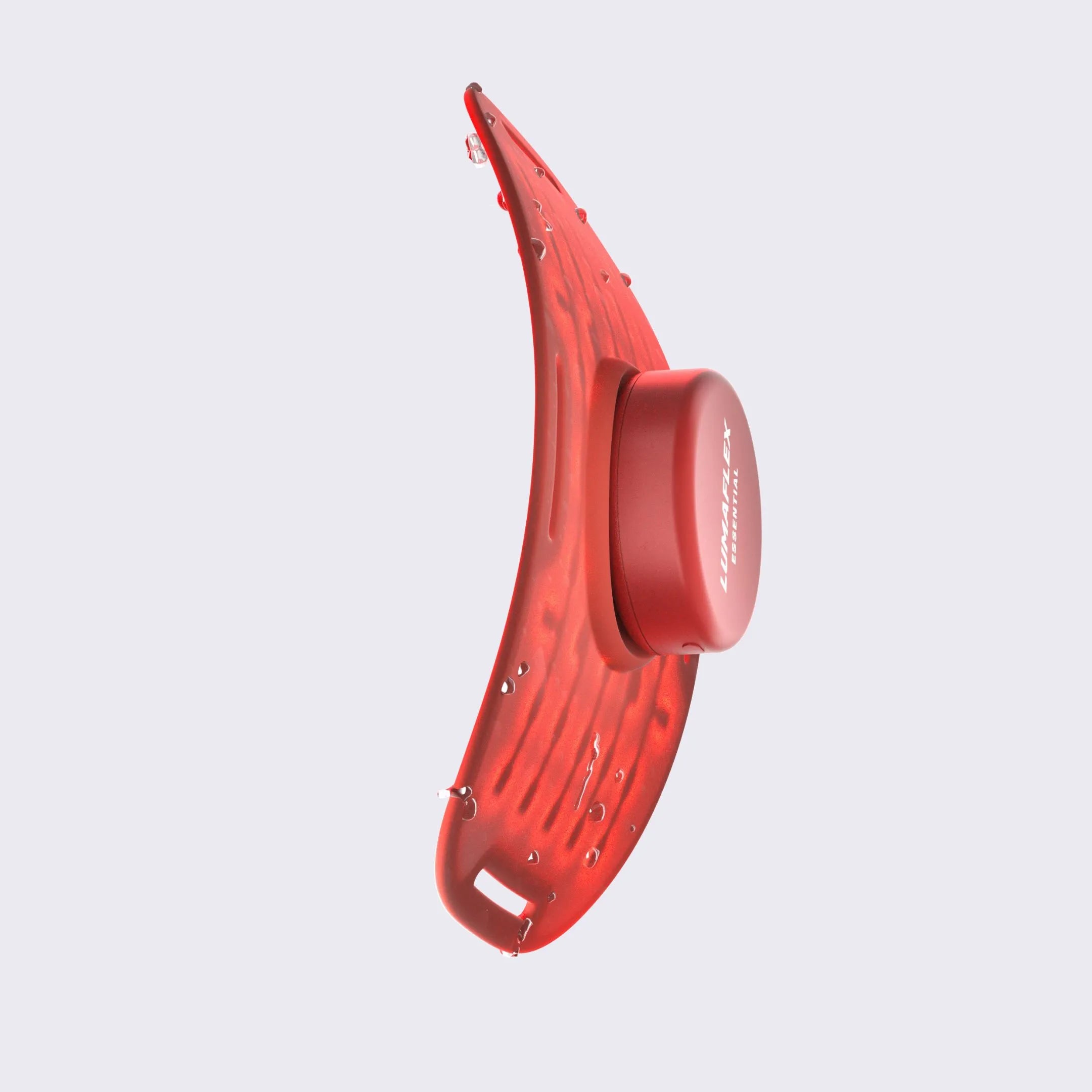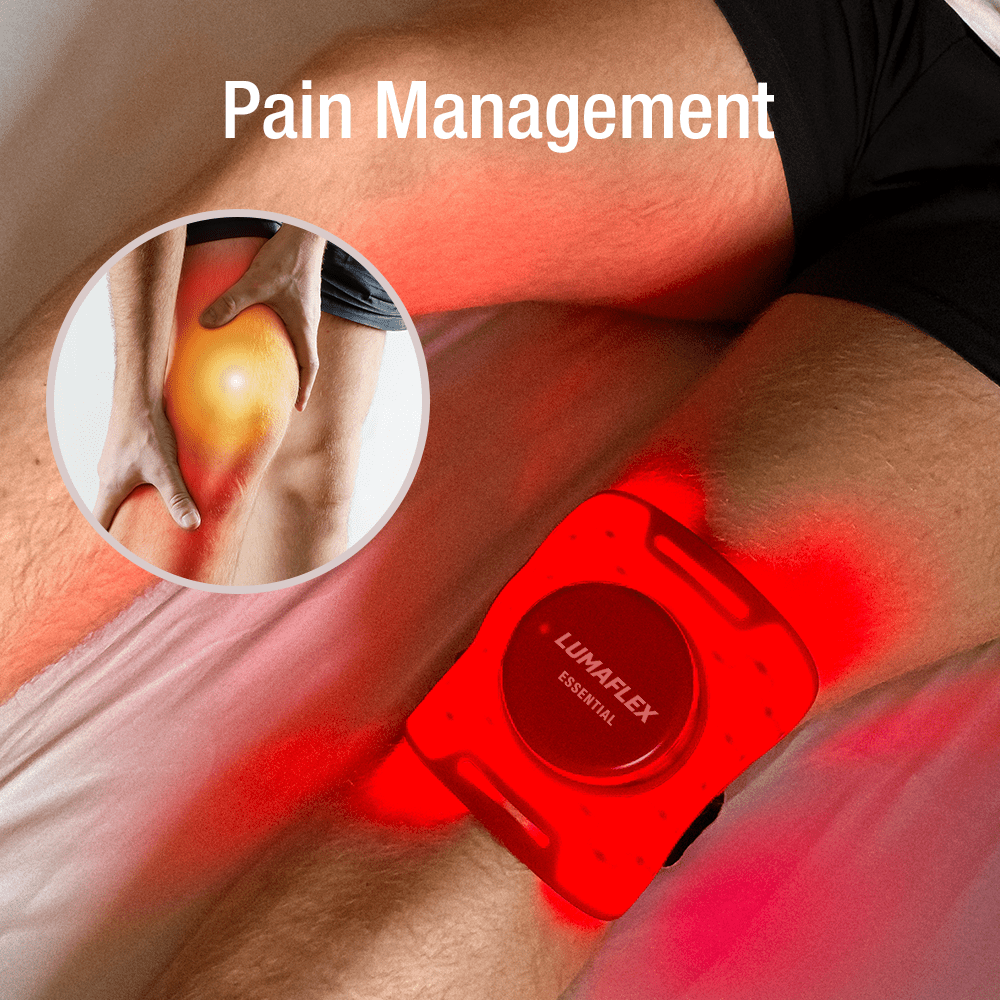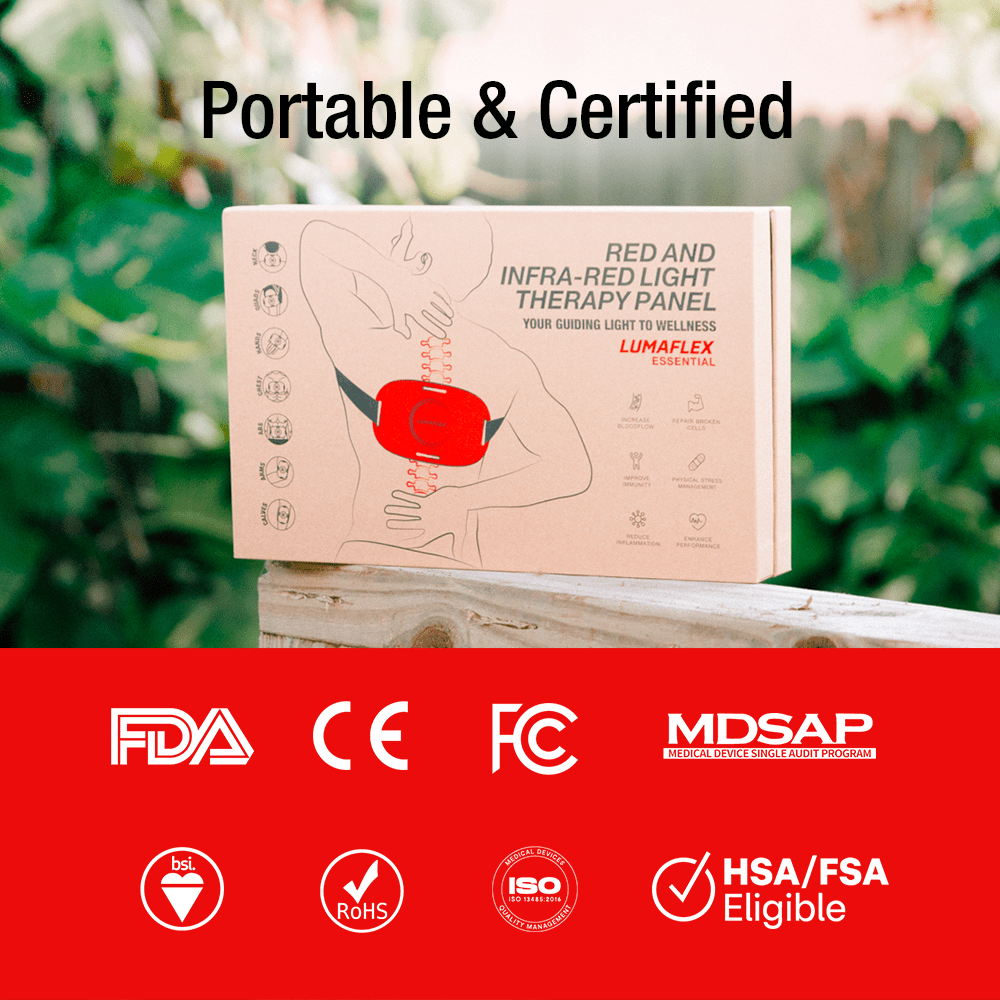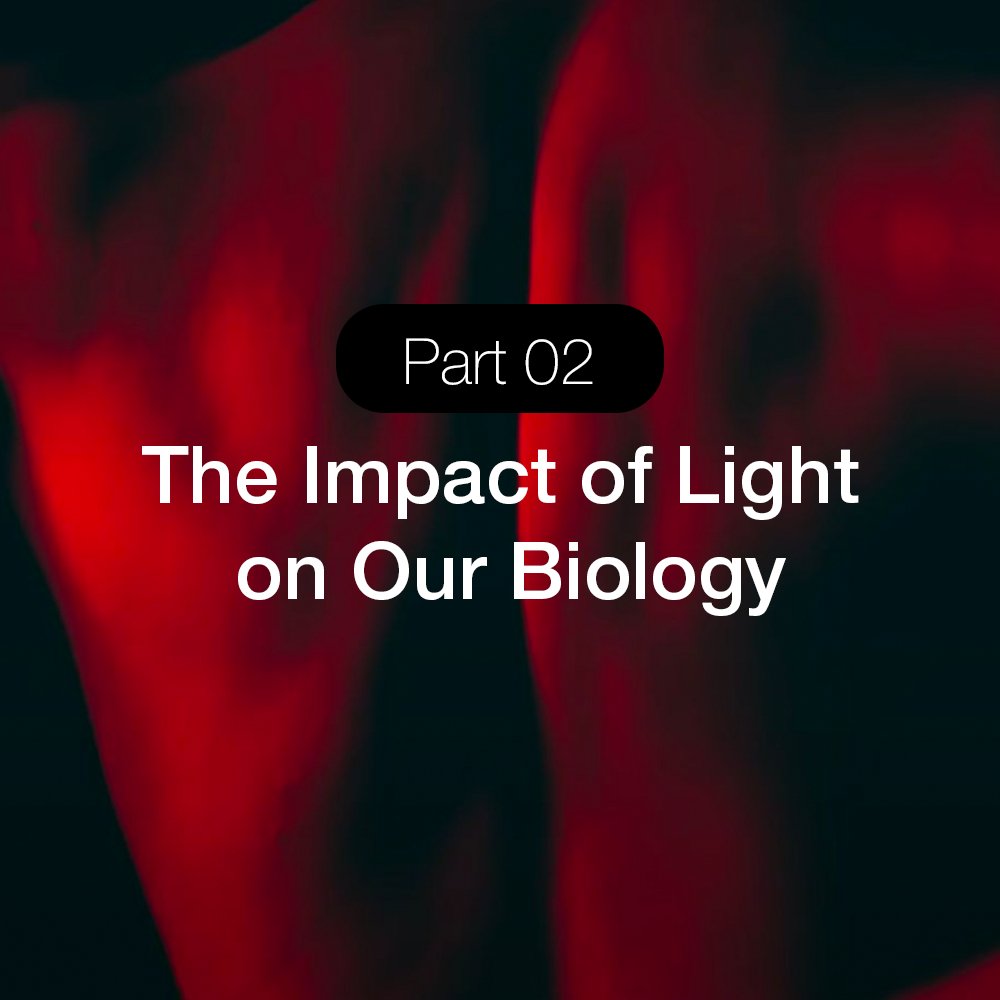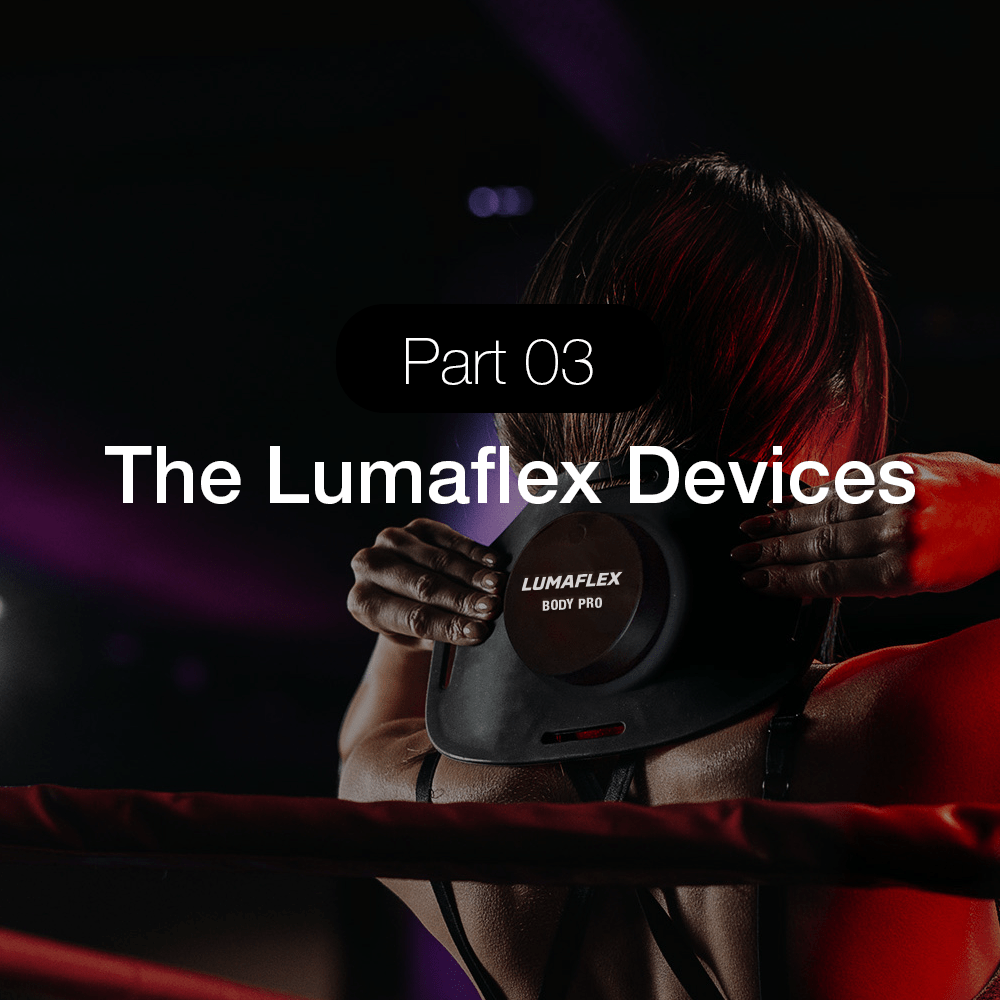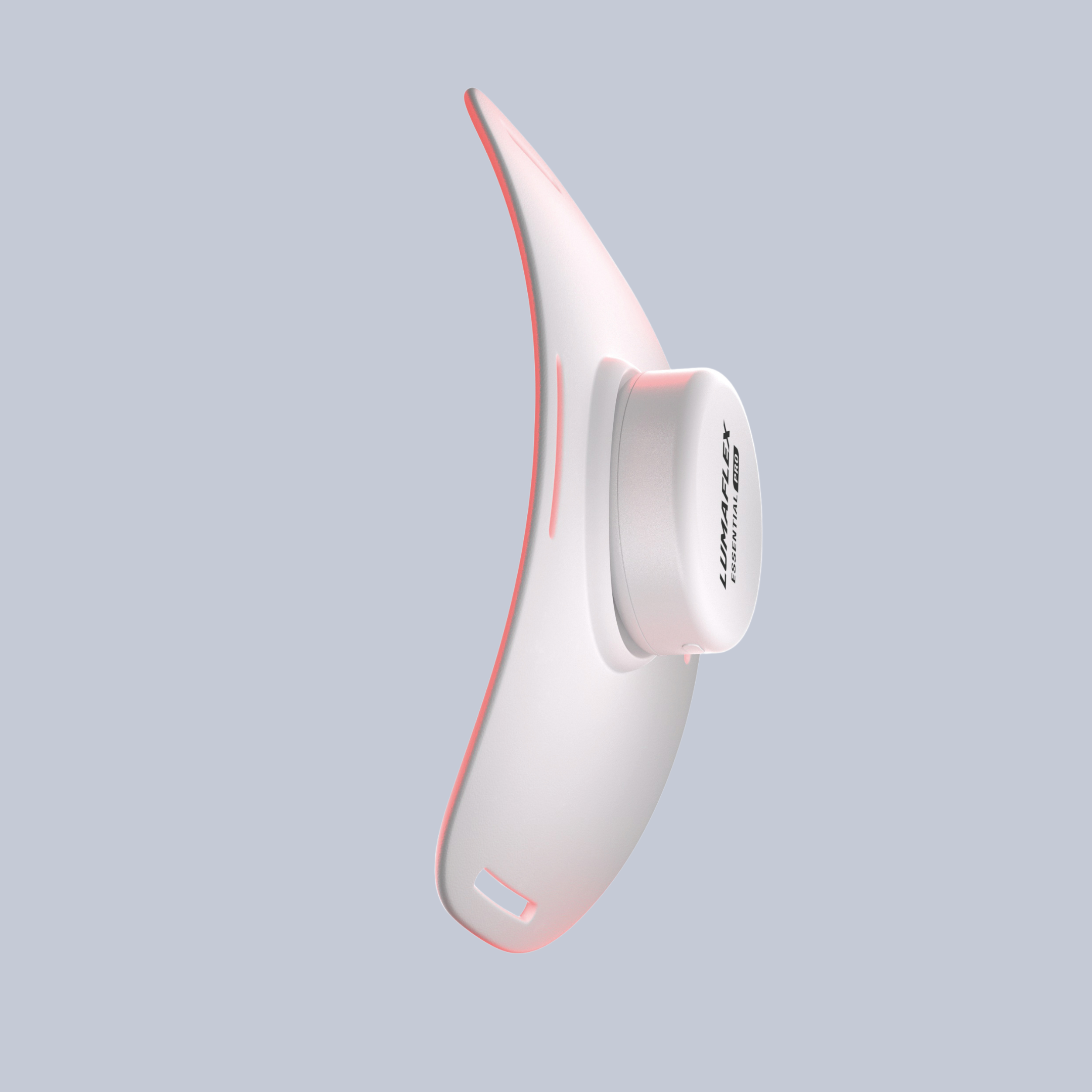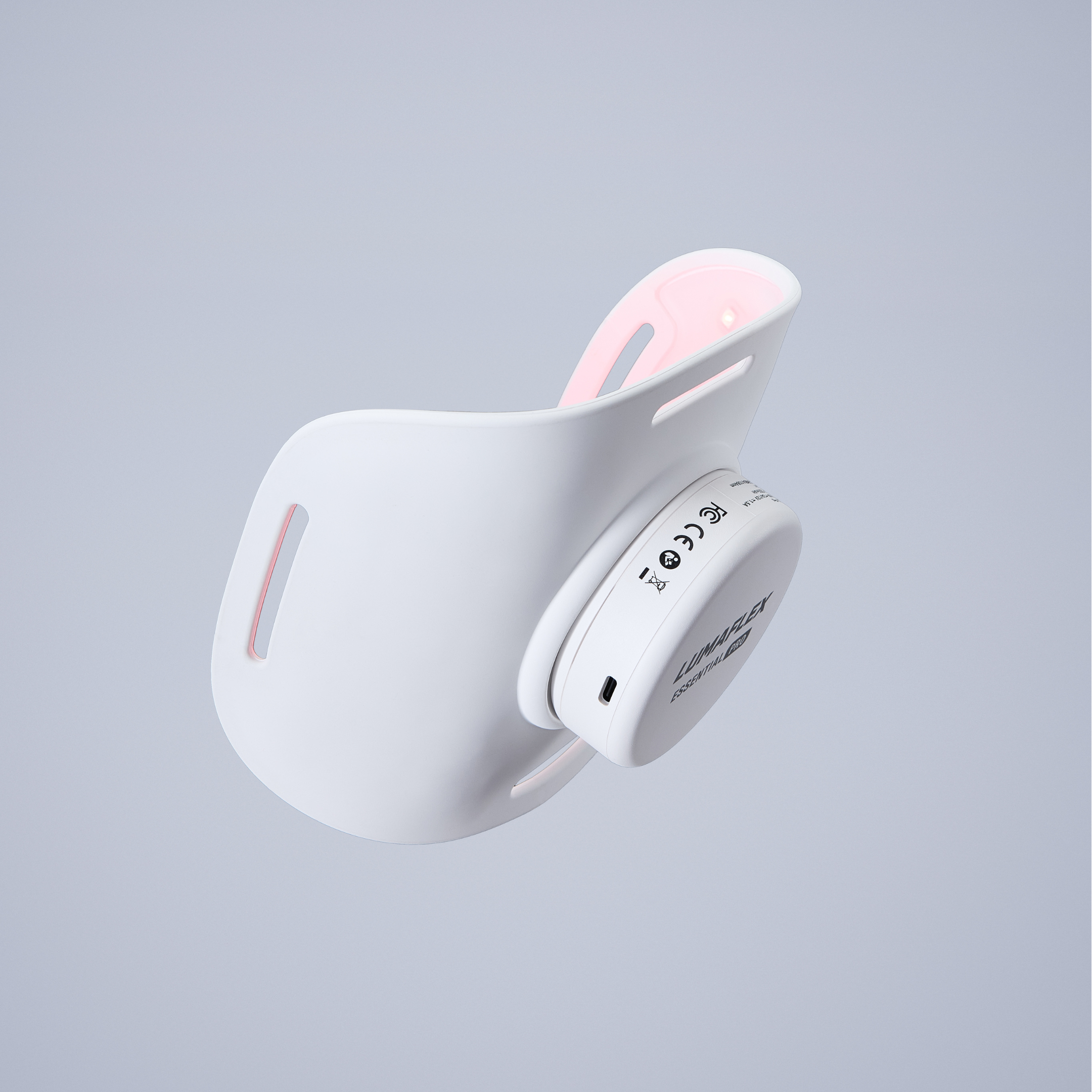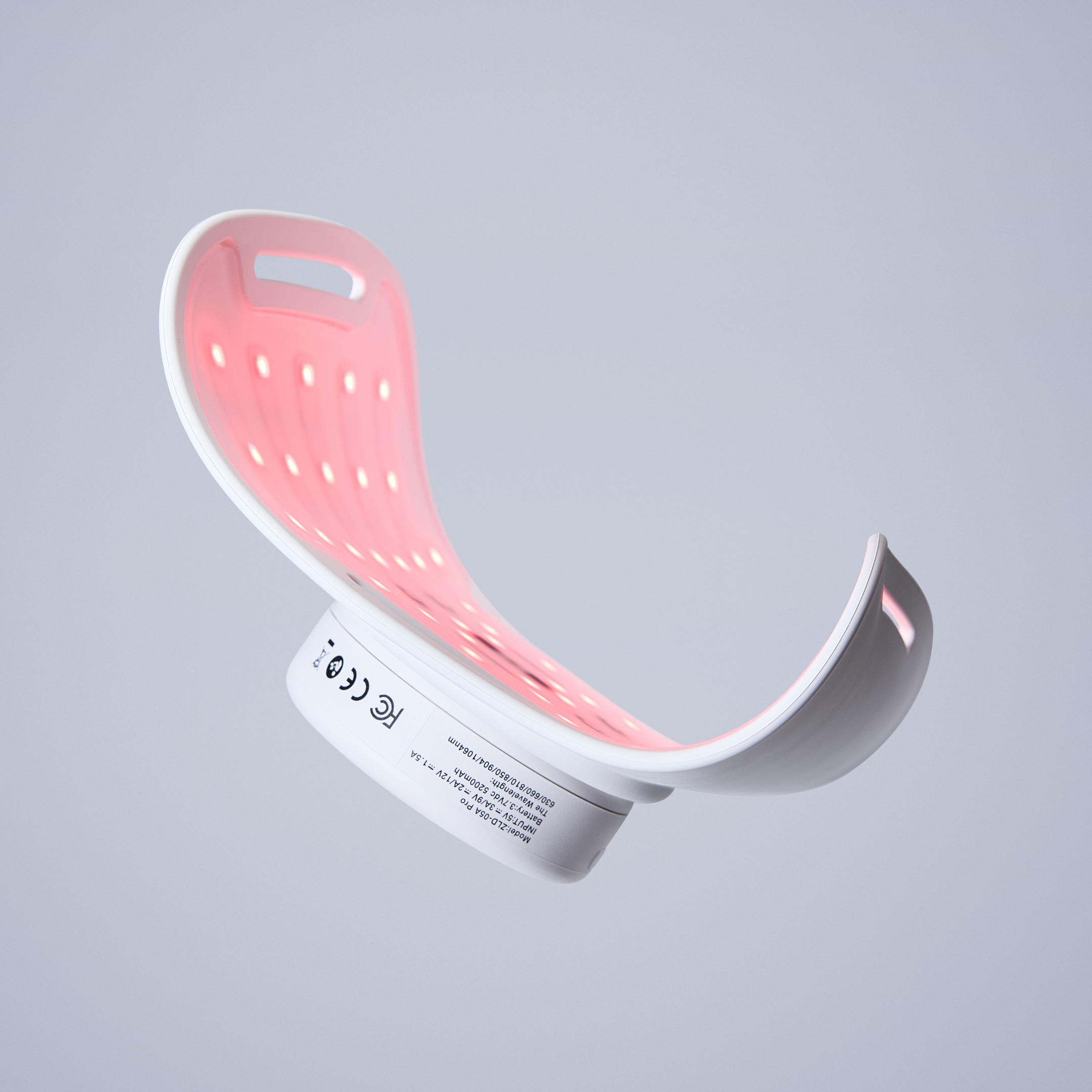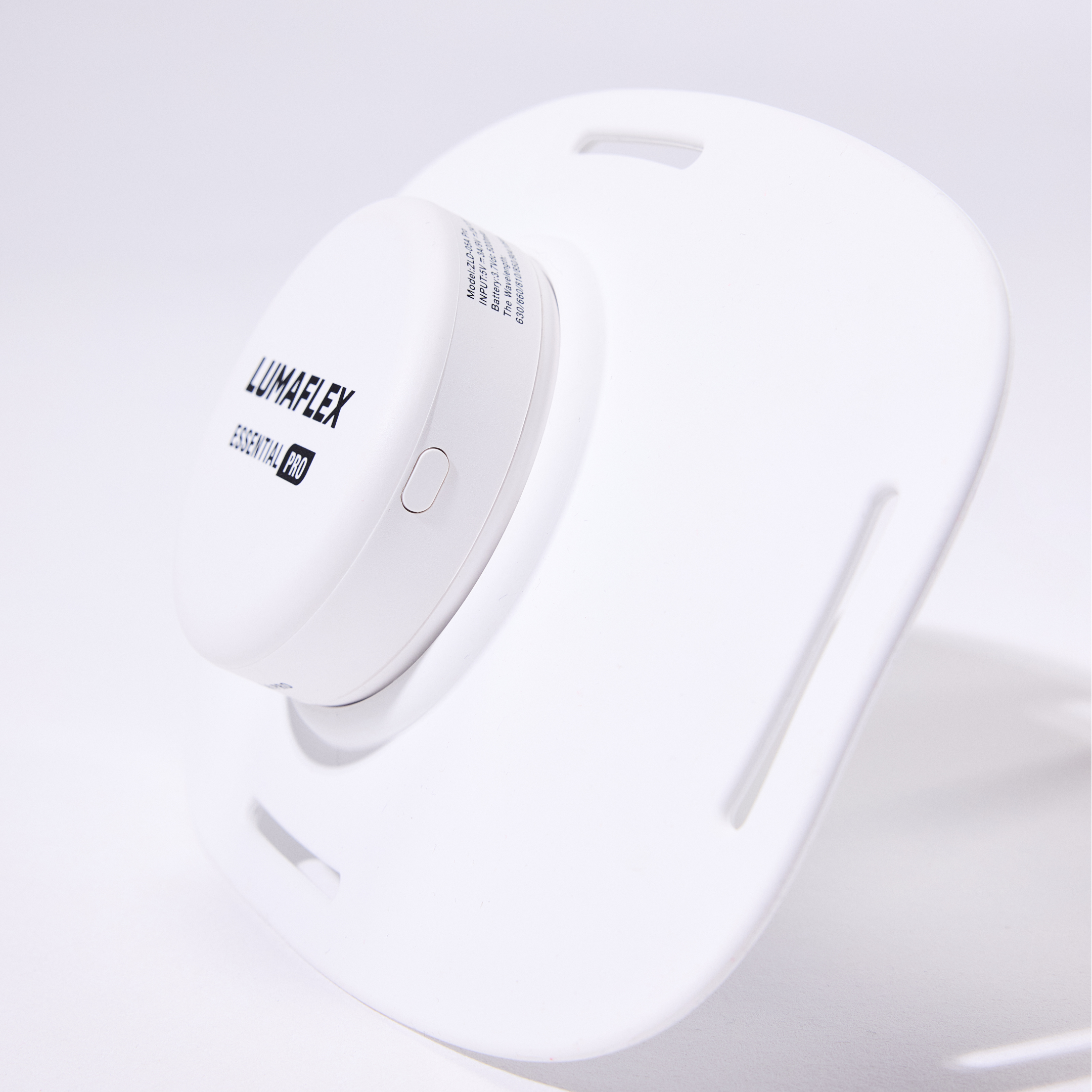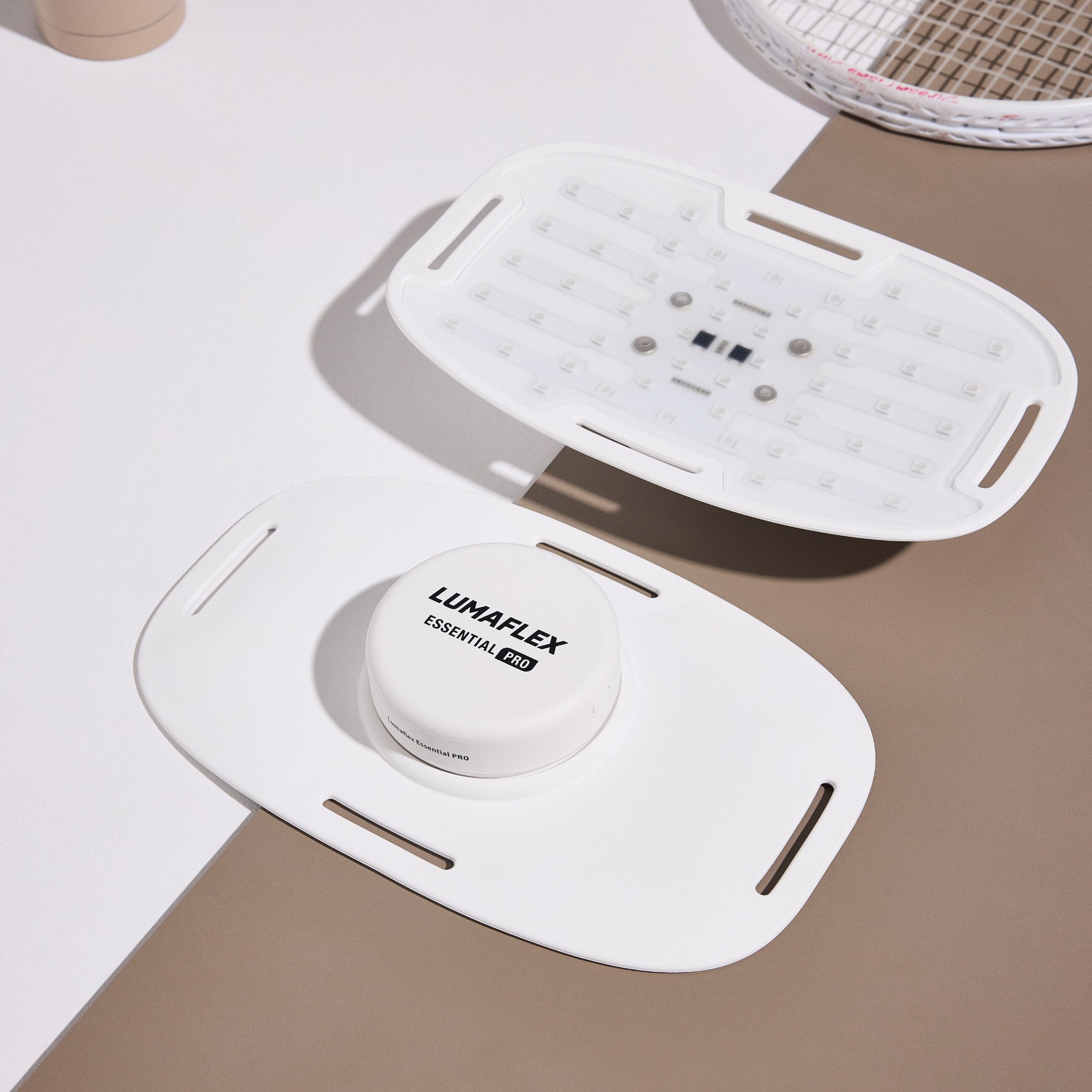Red Light Therapy for Migraines: Natural Relief for Fewer Migraine Days

If you're searching for red light therapy for migraines, you're not alone. More people are turning to this gentle, non-invasive approach to manage their migraine symptoms. Migraines can be debilitating, disrupting your daily life, draining your energy, and making even simple tasks feel impossible. While medications help many, they don't always provide lasting relief, and sometimes come with unwanted side effects.
This is why alternative, natural options like red light therapy are gaining popularity. It offers a supportive, drug-free solution that’s easy to incorporate into your daily routine. Many users report feeling a greater sense of control over their migraines without the harshness of pharmaceuticals.
While the benefits are promising: reduced pain, fewer headache days, and a more relaxed approach to self-care, it's important to consult with a healthcare professional before starting any new treatment. In this article, we'll explore how red light therapy works, its potential benefits, and how you can incorporate it into your self-care routine. Sometimes, a simple change can bring much-needed relief.
Table of contents
More Than a Headache: The Real Impact of Migraines
Migraines are more than just bad headaches. They are a complex neurological condition that can completely disrupt your life. If you've ever experienced that intense throbbing pain, along with symptoms like sensitivity to light and sound or nausea, you know how debilitating migraines can be. For many, these episodes aren’t occasional; they can become a chronic part of life, severely impacting work, relationships, and overall well-being.
Migraines can vary greatly from person to person, but they all share one thing in common: the profound effect they have on daily life. What might seem like just another headache to someone who doesn't suffer from migraines can actually be a disabling condition that prevents you from functioning at your best.
What Sets Off a Migraine: Key Triggers and Warning Signs
Identifying what sets off your migraines can make a world of difference in preventing future attacks. While triggers vary from person to person, certain patterns tend to emerge. Below are some of the most frequently reported culprits behind migraine episodes.
- Light sensitivity: Bright or flickering lights often make migraines worse.
- Nausea and vomiting: Many migraine sufferers experience queasiness or vomiting during an attack.
- Stress and anxiety: Emotional strain can trigger migraines, creating a frustrating cycle.
- Hormonal changes: Fluctuations, especially in women, can be a significant trigger.
- Certain foods and drinks: Caffeine, alcohol, processed foods, and aged cheeses may trigger migraines.
- Sleep issues: Too much or too little sleep can bring on a migraine.
- Environmental factors: Strong smells, loud noises, or drastic weather changes can also be triggers.
How Migraines Disrupt Daily Life
Migraines are more than just headaches. They can be completely debilitating, often striking without warning and forcing you to cancel plans, miss work, or retreat from daily responsibilities. The pain itself is intense, but it’s often accompanied by nausea, visual disturbances, and extreme sensitivity to light and sound, making even basic tasks feel overwhelming. For many, this leads to lost productivity, strained professional relationships, and an ongoing struggle to keep up with life’s demands.
Beyond the physical symptoms, the unpredictability of migraines can take a serious emotional toll. Living in fear of the next episode makes it hard to fully engage in social activities or long-term commitments. Over time, this sense of uncertainty can foster anxiety, isolation, and helplessness, contributing to a lower overall quality of life. Managing migraines isn’t just about relieving pain. It’s about reclaiming control and stability in everyday life.

Why Standard Migraine Treatments Often Fall Short
Traditional migraine treatments, such as over-the-counter painkillers or prescription medications, can offer relief, but often with limitations. For some, these drugs merely dull the pain rather than eliminate it, while others experience side effects like brain fog, fatigue, or gastrointestinal issues that trade one problem for another. In cases of chronic migraine, relying on medication alone can feel like a short-term fix rather than a long-term solution.
Some common limitations of traditional migraine treatments include:
- Partial or inconsistent relief, especially in chronic or complex cases
- Unwanted side effects, such as drowsiness, dizziness, or nausea
- Medication overuse headaches, which can worsen the condition
- Tolerance over time, requiring higher doses or frequent prescription changes
- Symptom-focused approach, often ignoring underlying triggers or root causes
This ongoing trial-and-error process can be frustrating and disheartening, leaving many patients searching for more sustainable and personalized treatment options.
Harnessing Light for Healing: The Promise of Red Light Therapy
This is where innovative, non-pharmaceutical options like red light therapy are beginning to stand out. Unlike traditional treatments that often rely on chemicals to suppress symptoms, red light therapy uses low-wavelength light to stimulate cellular repair and reduce inflammation. Two factors believed to play a role in migraine development. It’s a gentle, non-invasive approach that avoids the side effects commonly associated with pain medications, such as fatigue, brain fog, or rebound headaches.
What’s fueling its rise in popularity is a growing demand for safer, more sustainable relief—especially among those with chronic migraines who feel let down by conventional treatments. With early studies and patient experiences pointing to reduced migraine frequency and intensity, red light therapy is emerging as a compelling tool for those seeking more control over their condition without sacrificing their quality of life.
How Red Light Therapy Works and Why It’s Gaining Ground in Pain Relief
Red light therapy (RLT) is a non-invasive treatment that uses specific wavelengths of red and near-infrared light to stimulate natural healing processes within the body. When this light penetrates the skin, it reaches cells and energizes the mitochondria, the powerhouses of the cells, enhancing their ability to repair damage, reduce inflammation, and restore function.
Originally developed for wound healing and tissue regeneration, red light therapy has gained attention in recent years for its broader therapeutic potential, including pain relief, muscle recovery, and increasingly, migraine management. By improving cellular energy production and reducing inflammation around the nerves and blood vessels thought to be involved in migraines, RLT offers a drug-free approach that targets some of the root contributors to migraine pain.
Red Light Therapy for Migraines: A Deeper Look at the Science
Photobiomodulation (PBM) involves the use of specific wavelengths of red and near-infrared light to trigger biological changes at the cellular level, particularly within the mitochondria, the energy centers of your cells. When exposed to this light, mitochondria absorb the photons, which enhances their ability to produce adenosine triphosphate (ATP), the molecule that powers cellular activity. This boost in ATP supports more efficient cellular repair and reduces oxidative stress, which plays a key role in inflammation and pain.
In the context of migraine relief, this process is especially significant. By reducing neuroinflammation and modulating the activity of overactive or hypersensitive nerve pathways, photobiomodulation may help calm the central nervous system and restore balance. This can lead to fewer migraine episodes, less intense pain, and a gradual improvement in overall neurological resilience. Instead of simply masking symptoms, PBM supports the body’s ability to heal and regulate itself from within.
The Healing Power of Light: How Red Light Therapy Recharges Your Cells
Red light therapy works best at wavelengths between 630 and 850 nanometers (nm), which penetrate deeply into tissues, reaching areas where migraines often originate. Here's how it helps:
- Stimulates mitochondria, increasing cellular energy to aid recovery.
- Reduces inflammation, a major contributor to migraine pain.
- Improves blood flow to affected areas, easing discomfort.
- Supports natural healing and recovery processes within the body.
All of this happens painlessly and without drugs, making red light therapy an appealing, drug-free option for managing and potentially preventing migraines.

Targeting the Root: How Red Light Therapy Calms Migraine Pathways
At first glance, red light therapy may seem simple. Just shining light on your skin. However, beneath that gentle glow, a powerful process is happening inside your body. Red light therapy activates your cells' mitochondria, the tiny energy producers within each cell. This activation boosts the energy your cells need to repair and heal, which is especially important in areas affected by migraines.
The Cellular Engine: How Mitochondria Respond to Red and Infrared Light
Mitochondria are like the batteries powering your cells. During a migraine, these batteries often struggle to produce enough energy, leading to increased inflammation and pain. Red light therapy helps mitochondria work more efficiently, increasing energy production. This extra energy helps cells repair damaged tissues, calm overactive nerve signals, and potentially reduce the frequency of migraines over time.
For example, a 2000 study showed that 50% of participants experienced a reduction in the intensity of their migraines after 4 weeks of using red light therapy. This statistic highlights the potential of RLT to offer meaningful relief to many sufferers.
Calming the Storm: How Inflammation Fuels Migraine Pain, and How to Stop It
Inflammation is a central player in the development and persistence of many migraine attacks. When tissues in and around the brain become inflamed, often due to environmental triggers, hormonal shifts, or stress, the body releases pro-inflammatory cytokines and neuropeptides such as CGRP (calcitonin gene-related peptide). These chemicals irritate nearby nerves and cause blood vessels in the brain to dilate, creating the throbbing, pressure-like pain that characterizes migraine episodes. This cascade of inflammatory responses not only intensifies the pain but also contributes to accompanying symptoms like nausea and light sensitivity.
Red light therapy targets this process at the cellular level. By delivering specific wavelengths of light to affected tissues, it helps modulate the body’s immune response, reducing the production of inflammatory markers while encouraging cellular repair and circulation. As the inflammation subsides, the surrounding nerves become less reactive and pain signals are quieted. One clinical trial, published in Brain Injury, found that participants who received red light therapy experienced a significant reduction in both the frequency and severity of their migraines—suggesting that the anti-inflammatory effects of this therapy may play a vital role in long-term symptom management.
No Side Effects, No Downtime: The Appeal of Red Light Therapy for Migraines
One of the key benefits of red light therapy (RLT) is that it’s completely non-invasive and drug-free. Instead of relying on pills or injections, RLT uses gentle red and near-infrared light to stimulate natural healing without introducing chemicals or causing side effects. It’s a painless, low-risk option that can even be used at home, making it especially appealing for those seeking relief from migraines without the drawbacks of medication.
For individuals dealing with chronic migraines, this therapy offers a sustainable way to reduce symptoms while supporting overall well-being. Some of the major advantages of red light therapy include:
No systemic side effects, unlike many migraine medications
No recovery time or discomfort, with treatments that are quick and gentle
Compatible with other therapies, including supplements or lifestyle changes
Supports long-term cellular healing, not just symptom masking
Home-use devices are available, making it accessible and convenient
As more people explore natural solutions to chronic pain, RLT continues to stand out as a safe, science-backed alternative.

What the Research Says: Red Light Therapy’s Impact on Migraines
When considering a new treatment, it’s natural to seek proof of its effectiveness. Fortunately, multiple clinical studies on red light therapy (RLT) have explored its potential as a relief method for migraines, providing promising evidence that RLT is not just a passing trend but a scientifically-backed treatment.
Breakthrough Studies: What Clinical Research Reveals About Red Light Therapy
A 2023 case–control study published in European Journal of Medical Research evaluated low‑level intravascular laser irradiation of blood (ILIB) using a 660 nm red laser, targeting vascular function in migraine patients.
Study Summary:
-
Participants:
24 migraine sufferers (15 received ILIB, 9 received standard rehabilitation)
Median age 54, majority female
-
Treatment Protocol:
Weekly sessions: red laser (660 ± 10 nm, 100 mW), applied via intravenous access for ~10 sessions over four weeks
Key Outcomes:
-
Pain intensity (Visual Analogue Scale):
Dropped significantly in ILIB group (mean ~5.07 → ~2.63 immediately after treatment; sustained at ~3.30 at 1‑month follow‑up) (P = 0.001 and P = 0.021 respectively)
-
Cognitive function (MoCA score):
Improved significantly from ~27.13 → ~28.33 immediately, sustained at ~28.60 at follow-up (P = 0.003, P = 0.034)
-
Migraine-related disability (MIDAS score):
Decreased at 1‑month follow-up (P = 0.033) Reddit+4BioMed Central+4Reddit+4
-
Sleep quality (Athens Insomnia Scale):
Significant improvement (P < 0.001)
-
Cerebral blood flow:
Increased ~1.27-fold post-treatment based on SPECT imaging measurements
-
Adverse events:
None reported during or after therapy
Soothing the Brain: How Red Light Therapy Lowers Migraine Severity
Red light therapy has been proven to help calm nerve activity and reduce inflammation, two major contributors to migraine pain. A study published in Cephalalgia found that regular use of RLT led to a significant decrease in both the frequency and severity of migraines. The therapy works by reducing inflammation in the brain, helping to decrease nerve irritation and blood vessel swelling, which are common causes of migraine pain.
A noteworthy study titled “Applying of Low Level Laser Therapy (LLLT) for Pain Management in Migraine” sheds important light on how LLLT can help individuals with migraines. The researchers found that this therapy not only effectively reduces migraine-related pain but also lessens the reliance on medications. This dual benefit is particularly valuable for those seeking to avoid pharmaceutical side effects or the risk of rebound headaches often linked to overuse of traditional migraine drugs.
Additional support for LLLT’s potential comes from a comparative study that examined the outcomes of using Botulinum toxin A (BT-A) versus LLLT in managing chronic migraines. In the study titled “Botulinum Toxin A (BT-A) Versus Low-Level Laser Therapy (LLLT) in Chronic Migraine Treatment: A Comparison,” participants in the LLLT group saw a substantial drop in the number of headache days—both during treatment and continuing afterward—demonstrating the long-term effectiveness of laser therapy for chronic migraine sufferers (p < 0.001).
Furthermore, a clinical investigation titled “Light Therapy Modulates Serotonin Levels and Blood Flow in Women with Headache: A Preliminary Study” explored how LLLT influences physiological processes in patients with tension-type headaches. The study observed that applying LLLT not only boosted local blood flow in the affected areas but also increased serotonin (5-HT) levels for up to three days after treatment. These findings point to a direct biological impact of light therapy on both circulation and neurotransmitter activity.
What’s Next for Red Light Therapy: Breakthroughs on the Horizon
While large-scale studies are still underway, the current body of research presents a hopeful outlook for red light therapy as a non-invasive, effective migraine treatment. As more data becomes available, more individuals will have a natural, scientifically-supported option to help manage migraine attacks and improve their quality of life.

Light as Lifestyle: Building Red Light Therapy into Your Migraine Routine
Adding red light therapy to your daily routine doesn’t have to be complicated. In fact, incorporating it into your self-care plan can help you stay proactive in managing migraines. The key is consistency and combining RLT with other healthy habits to maximize its benefits.
Finding the Right Rhythm: How Often to Use Red Light Therapy for Migraines
To see the best results, most experts recommend using red light therapy devices once or twice a day. Sessions typically last between 10 to 20 minutes, depending on the device and your comfort level. Start with shorter sessions to assess how your body responds, and gradually increase the duration if needed. Consistency is key. Regular use over several weeks often leads to noticeable improvements in migraine frequency and intensity.
Daily Habits That Work with Red Light Therapy
Red light therapy works best when combined with other healthy habits. Here are some simple practices to integrate into your routine:
- Stay hydrate: Drinking enough water can prevent dehydration, a common migraine trigger.
- Prioritize rest: Quality sleep helps regulate your nervous system and reduces the likelihood of attacks.
- Manage stress : Practices like meditation, deep breathing, or gentle yoga can calm your mind and body.
- Eat balanced meals: Avoiding trigger foods and maintaining steady blood sugar levels can help.
- Limit screen time: Reducing eye strain and exposure to harsh lights can help prevent migraines.
By combining RLT with these self-care practices, you create a balanced routine that empowers you with natural, gentle relief. With patience and consistency, these steps can lead to meaningful improvements in your overall well-being.

How to Choose and Where to Buy Reliable Red Light Therapy Devices
When selecting a red light therapy device for migraines, it’s important to choose one designed specifically for pain relief. Here are some top-rated devices that are highly regarded for their effectiveness and customer reviews:
- Joovv Solo 3.0 – Known for its powerful light output and full-body coverage, this device is perfect for those looking for both pain relief and overall wellness support.
- MitoRed MitoPro 1500 – A highly rated device that offers targeted relief with a range of wavelength options, ensuring versatility for migraine sufferers.
- Lumaflex Body Pro – A professional-grade waterproof device designed for targeted pain relief, offering powerful and effective treatment with high-quality LEDs, ideal for migraine management.
These devices can be found on their respective websites or major health retailers like Amazon. Be sure to read customer reviews and consult with a healthcare provider to determine which device is best for your needs.
How RLT Compares to Traditional Pain Management
When it comes to managing migraines, many people turn to medications, yet these often come with a set of drawbacks. Red light therapy for migraines, however, stands out as a compelling alternative treatment. Its benefits make it especially appealing for those seeking a safer, more natural approach.
No Medication Side Effects
One of the biggest advantages of RLT is that it’s completely non-invasive and free from the side effects associated with many pharmaceutical treatments. Medications can sometimes cause dizziness, nausea, or fatigue, which only add to the discomfort of migraines. Red light therapy, on the other hand, offers relief without introducing chemicals or disrupting your body’s natural balance. For many, this means fewer worries about adverse reactions and a more comfortable path to wellness.
Natural, Drug-Free Approach to Migraine Relief
RLT works by using light to stimulate healing, making it a natural treatment that aligns with the growing desire for non-pharmaceutical solutions. It allows individuals to take an active role in managing their migraines without depending solely on medications. Plus, it's easy to incorporate into your daily routine, whether at home or in a wellness clinic, making it both accessible and convenient.
RLT vs. Medication: A Quick Comparison
| Feature | Red Light Therapy (RLT) | Medications |
|---|---|---|
| Side Effects | No significant side effects | Can cause dizziness, nausea, fatigue, etc. |
| Treatment Type | Non-invasive, drug-free | Chemical-based, often involving pills or injections |
| Frequency of Use | Can be used daily with minimal commitment | Often taken as needed or prescribed regularly |
| Convenience | Can be used at home or in a clinic | Requires doctor visits for prescriptions and refills |
| Effectiveness | Reduces frequency and severity of migraines for many users | Varies from person to person; may lose effectiveness over time |
| Long-Term Use | Safe for long-term use with consistent results | Long-term use may lead to dependence or reduced efficacy |
First-Time Guide: What to Expect with Red Light Therapy for Migraines
Embarking on red light therapy for migraines can be a beneficial step toward natural relief, but it’s important to approach it thoughtfully. Choosing the right red light therapy device and understanding how to use it safely can help you get the most out of this treatment.
Choosing the Right Device for Home Use
When selecting a red light therapy (RLT) device, look for one specifically designed for migraine relief or general skin and tissue therapy. Consider factors such as the wavelength range (630-850 nm is most effective), size, ease of use, and safety certifications. Some devices are handheld, while others are larger panels. Choose the one that fits your routine and available space best.
Reading customer reviews and consulting with a healthcare professional can help ensure you select a reliable, quality device. Additionally, at-home RLT devices can vary significantly in cost, ranging from $100 to $600 or more. It's important to consider your budget and whether insurance may cover the cost of certain devices, as coverage varies. Some health insurance plans may reimburse you for medically necessary devices, so it’s worth checking with your provider.
How to Start with Shorter Sessions and Monitor Progress
Begin with shorter sessions, around 10 minutes, and gradually increase to 20 minutes as your body adapts. Pay attention to how you feel after each session; track any changes in migraine frequency or intensity. Keeping a migraine journal can help you monitor progress and identify patterns. If you experience discomfort or unusual symptoms, consider reducing the session length or consult with a healthcare provider.
Using RLT safely and consistently can optimize its benefits. By choosing the right device and starting slowly, you set yourself up for a comfortable, effective journey toward managing migraines naturally.
FAQS: Common Questions About Red Light Therapy for Migraine
1. What is red light therapy and how does it work?
Red light therapy, also known as photobiomodulation therapy, uses specific wavelengths of red and near-infrared light to stimulate cellular activity. It works by increasing mitochondrial energy production within cells, which can promote tissue repair and reduce inflammation. Some studies suggest RLT may help with pain management and improve sleep quality—both relevant factors for migraine sufferers.
2. Is red light therapy effective for migraines?
While ongoing research continues to explore RLT’s full potential, some studies indicate it may provide relief for certain individuals. For example, one study found that green light was more effective than red, blue, or white light in reducing migraine intensity. However, responses to red light therapy vary, and its effectiveness can differ from person to person.
3. What are the potential risks and side effects of red light therapy?
RLT is generally safe when used properly. However, high-intensity RLT may cause skin redness or blistering in some cases. Protecting your eyes during treatment is essential, as improper use can lead to eye damage. People with specific medical conditions or those on certain medications should consult with a healthcare professional before starting RLT to ensure safe use.
4. Are there any precautions for migraine sufferers using RLT?
If you have a history of migraines, it’s advisable to consult with a healthcare provider before beginning RLT. They can help determine whether it’s appropriate for your specific type of migraine and recommend suitable settings and treatment protocols. Start with shorter sessions, gradually increasing as tolerated. If you notice worsening symptoms or sensitivity, discontinue use and seek medical advice.
5. Where can I get red light therapy for migraines?
RLT is available at some clinics, spas, and through at-home devices, like Lumaflex. When considering at-home options, prioritize reputable providers and devices. It’s also wise to discuss your plans with a healthcare professional to choose the best solution tailored to your needs.
Conclusion
Red light therapy offers a promising, natural alternative for managing migraines, with scientific evidence supporting its ability to reduce both the frequency and severity of attacks. Its non-invasive, drug-free approach makes it an attractive option for individuals seeking relief without side effects. By integrating RLT into your self-care routine and combining it with healthy lifestyle practices, you can take an active role in managing your migraines and improving your quality of life.
Key Takeaways:
- RLT for migraines is backed by research and can be an effective, non-invasive treatment option.
- Incorporate red light therapy into your self-care routine by choosing the right device, starting with shorter sessions, and combining it with hydration, rest, and stress management.
- It offers benefits over traditional treatments, including minimal side effects and natural healing.
- Always consult healthcare professionals before beginning RLT to ensure safety and suitability.
- Explore various RLT devices and resources to find the best fit for your lifestyle.
Take Action Now
If you're ready to experience the potential benefits of red light therapy, don't wait. Start by exploring reputable RLT devices and scheduling a consultation with your healthcare provider to discuss how it can fit into your treatment plan. Taking action now could lead to improved migraine management and overall well-being with a natural, safe approach.
Related Readings
- Red Light Therapy for Migraines: Techniques and Gift Ideas for the Festive Season
- Your Independence Day 2025 Game Plan: 7 Tips for Celebrating Pain-Free
- Understanding Energy Flow: Integrating Red Light Therapy with Acupuncture
- Portable Red Light Therapy: Convenient Therapy on the Go
- Want Relief From Pain? Just Add Light! with John Graham
- A Homemaker's Guide to Using Portable Red Light Therapy for Pain Relief
- Red Light Therapy for Nerve Repair: A Powerful Solution for Healing and Pain Relief
- Red Light Therapy for Pain 101: Benefits and How It Works





